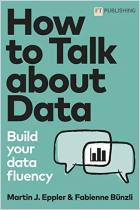加入 getAbstract 阅读摘要

加入 getAbstract 阅读摘要
Stephen M. Stigler
The Seven Pillars of Statistical Wisdom
Harvard UP, 2016
看看什么内容?
Did a beer manufacturer contribute to statistical analysis? Here’s the fascinating history behind data science.
Recommendation
In his a colorful tour of biblical heroes and beer production, professor Stephen M. Stigler provides an entertaining, stimulating overview of data science and historical trends in statistics and data analysis. Math nerds will open the book for its concrete examples and mathematical formulas. Lay readers will engage with Stigler’s gossip and insights. Stigler speaks to geeks, academics and social scientists, but curious readers will find much to learn about this misunderstood and vital field.
Summary
About the Author
Stephen M. Stigler is a professor at the University of Chicago. His other books include The History of Statistics and Statistics on the Table.

















Comment on this summary